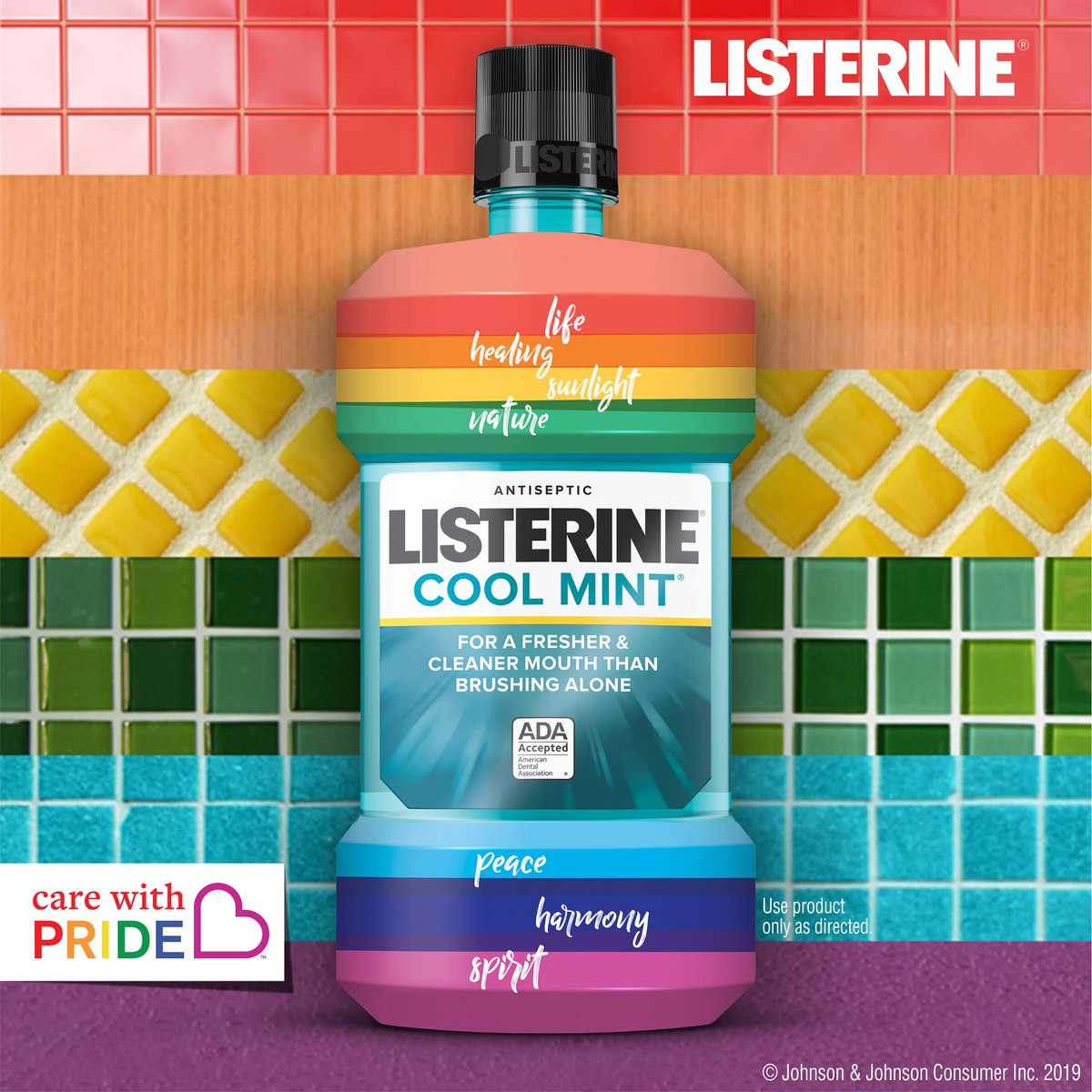A Small Business Owner’s Guide To Marketing During Pride Month
June is here. We all know that, right? But for the last two decades, this middle child of the year has had a special connotation. It is Pride Month, a month to celebrate, and ewmpower, the LGBTQIA community.

For better or for worse brands have been a huge part of all pride month events for a long time now. Like with all holidays, there are commercials, statements, endorsements, and fundraisers to show their allegiance to the customer base. But is it all done with the right intent? Sometimes. Should everyone do this? And if yes, how do you do it right?
When you are a small business owner, it is hard to find the time to read up on anything that’s outside of your day-to-day operations. And of course, no one should put out a statement without understanding the history, significance, and meaning of a movement.
So if you want to connect meaningfully with your customer base but are afraid to put the wrong foot forward, this is the blog for you. All you need to know to approach Pride Month marketing, the right way, is at your disposal.
We only request that you read this guide and then take a little more time to understand what these values connect with your brand before you act on them. On that note, let’s dive right in.
A quick history of Pride Month
While a heavily celebrated occasion today, many tend to forget the origins and past of Pride Month. Today, it is a month that encourages everyone to live their truth, to practice a life of pride, joy, and self-affirmation. But it also marks the anniversary of the Stonewall riots in the USA.
Stonewall Riots, or the stonewall protest, began as a demonstration against the police raiding bars and establishments frequented by the LGBTQ+ community. People did not want to hide anymore and needed space for themselves in the country to live their lives without the fear of getting arrested. And so they protested. This was in 1969 and ever since then the community has come together and marched for justice.
In fact, the Pride flag, one of the biggest symbols of the LGBTQ+ community came into existence much later, in 1978. Gay artist and designer Gilbert Baker was commissioned by one of the first openly gay elected officials, Harvey Milk to make a symbol for the community. Something they could all rally upon.
Mr. Baker chose the rainbow as a symbol and after a few iterations and printing mishaps, the 6-colored flag was born. Of course, there is a huge subset of flags for the various identities within the LGBTQIA+ community today. And we will get to that later.
As a business owner looking to be a part of the Pride Month celebrations, it is important to know its origins. Here, Pride Month is not just about celebrating identities, but also about the struggles of every member of the community just to exist. So your communications, marketing materials, and/or press releases must take this into account and maintain the tone accordingly.
Pride Month marketing: Know the terms
Now that we have the context, let’s get into digging a little deeper. We implore business owners and brands to know the vocabulary before including them in your advertisement copy.
LGBTQ: LGBTQ is the term you will see everywhere for the next few weeks and if you plan to use them in your copy, know what it stands for. LGBTQ is an acronym for the community that encompasses the Lesbian, Gay, Bisexual, Transgender, and Queer identities. It is also extended as LGBTQIA+ sometimes to include Intersex and Asexual identities.
Asexual: This refers to a lack of sexual attraction to others or a low or an absent interest in sexual activity.
Gay: A sexual orientation where people are romantically and sexually attracted to people of the same sex. It is a term that is often used to describe male relationships in particular.
Lesbian: Similar to gay, but here the term is used to describe female relationships in particular.
Bisexual: A person who is sexually and romantically attracted to people of more than one gender identity.
Pansexual: A person whose romantic and sexual interest does not necessarily have anything to do with the other person’s gender identity.
Transgender: A person whose gender identity is different from the sex they were assigned at birth.
Cisgender: A person whose gender identity is the same as the sex they were assigned at birth.
Gender Identity: Gender identity is a person’s intimate knowledge of their gender. It may or may not be the same as the sex they were assigned at birth.
Non-binary: A person who does not identify as one particular gender.
Ally: Someone who not just supports the LGBTQIA+ community externally but also uses their privilege and standing in society to make a difference in the world.
Know the symbols and colors
The LGBTQIA+ community’s symbols and representations are extremely colorful. Everyone knows that. They bend societal norms and use colors/patterns as a medium of expression in a world that has traditionally tried to quieten them.
Each flag, each symbol, and color hold a lot of meaning to them so if you want your audience to appreciate your efforts, know these and use them right.
The rainbow flag:
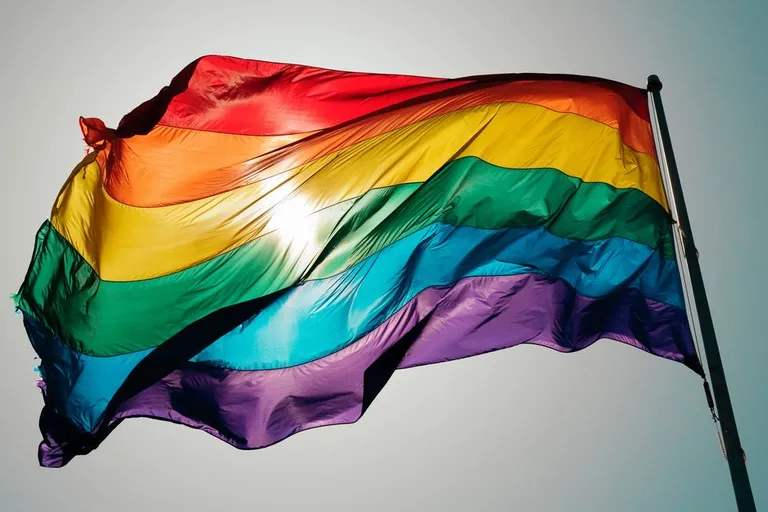
As we mentioned in the opening section, the rainbow flag is almost synonymous with the community. So if you are looking to represent this community in your communications, the usage of this flag is appropriate. It was an earlier version but has been updated to include other identities and people of color.
The rainbow flag including the People of Color:
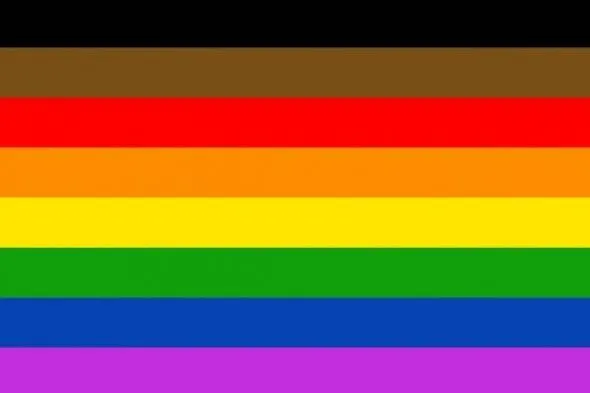
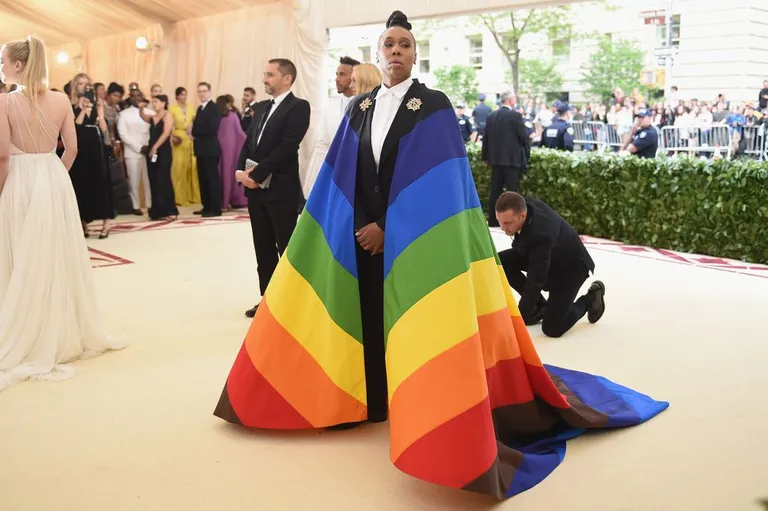
As you can see, this flag is similar to the rainbow flag earlier mentioned but is much more inclusive to people from different races. This specifically makes a lot of sense because while the Pride movement originated in the USA, there are people worldwide suffering the same conditions. This flag gives them representation.
The bisexual flag:
Michael Page wanted to spotlight the bisexual community in 1998 and came up with the flag you see below. So he took the most typical colors for boys and girls as blue and pink respectively and introduced an overlapping layer that forms the color purple. This helps the bisexual community relate to the pattern and find something that is meant for them.

The lesbian flag:
Of all flags, the lesbian flag has a little controversial history. Primarily, the first lesbian flag that you see below here was designed by Sean Campbell. Here, the weapon that you see is called Labrys, a double-sided ax used by the Amazonians but the black triangle is connected to Nazi history.
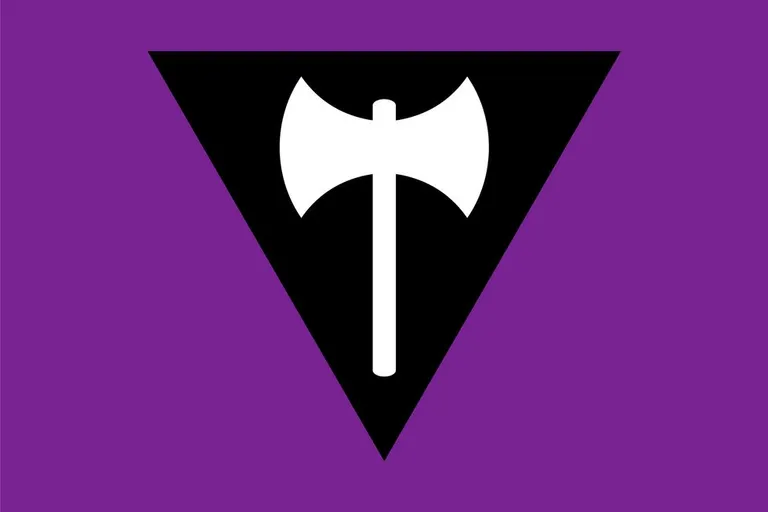
To get around this controversy, in 2018, the community got an updated lesbian flag that has a lot more colors to include and celebrate gender non-conformity, independence, community, womanhood, serenity, peace, love, sex, and feminity. This is how it looks.
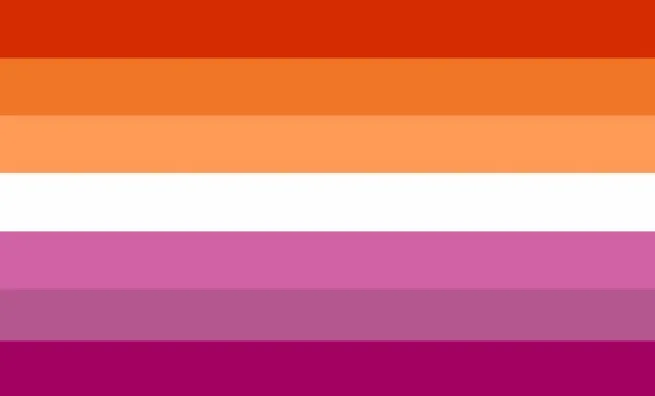
Asexual flag:
Historically, people from the asexual community do not get representation on many LGBTQ platforms. So it is great that they have a specific flag to celebrate their identity and find a place for themselves too.
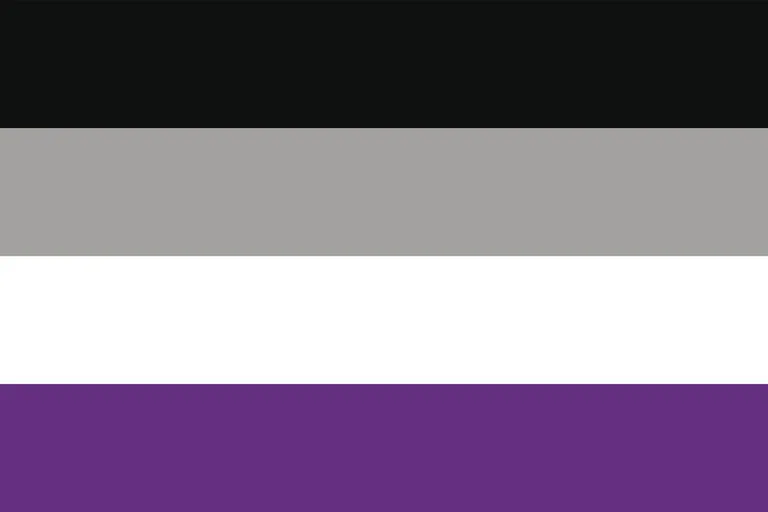
Transgender pride flag
Next up on the list of flags, is the transgender pride flag. Historically and even currently, this community is always under a lot of scrutiny and policing. So this flag is as significant today as it was when it was released. The colors are specific to the community along with the symbol for a transgender person (a combination of the symbols for male and female identities)
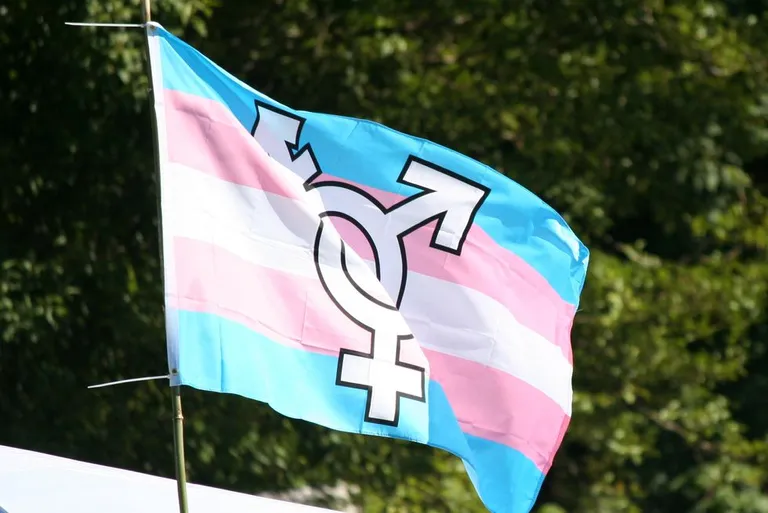
How to approach Pride Month marketing right: Ideas to show support to the community
Now that we have the basics out of the way, let’s look at how to approach Pride Month marketing. It can be tricky, especially for a small business with limited resources and personnel bandwidth for these campaigns.
- First off, let’s acknowledge that Pride month is not the opportunity to do moment marketing. It is a sacred event for many of your customers and they may not want to see topical content for the sake of it. Analyze your business goals, mission, and target audience to see how you can make a connection without seeming insincere.
- Second, if all you want to do is tell your customers, partners, and employees that you are an ally to the community, you can do that. But ensure that the press release you put out is comprehensive, includes the actions to have taken to create a safe workplace, and how you intend to support the community. It can be a video or a social media post, or even a blog. Just ensure it is clear and concise.
- Pride Month is about putting the spotlight on the community, so turn over the mic to them. If you have a substantial following on social media, seek partnerships with the influencers of the LGBTQ community, and invite them to speak to your audience.
- If you have employees from the community in your organization, give them a platform to share their experiences during this month.
- If you do create a video advertorial, ensure that you represent the symbols, colors, terms, and people appropriately to avoid harming your customers’ sentiments.
The intent here is to show support in an emotional time for the LGBTQ community; ensure that it comes out right.
3 Pride Month Marketing Failures to learn from
We saw the do’s and while they all sound simple enough, it is also important to know what the slip-ups look like. Over the past few years, customers from the LGBTQ communities and their allies have been registering their distaste for the commercialization of the movement. While brands do come out in full force with good intent, more often than not it is just lip service.
Let’s take a look at some of such instances that have been called out and opposed vehemently by the public. When you know what not to do, the path becomes even clearer.
1. Tentative efforts by Skittles
Whenever we talk of the biggest and splashiest Pride Month marketing campaigns, what do you remember? Well, if you were in the USA or UK, you will remember the 2017 Skittles campaign where their colorful package turned monochrome to give way to the most important “rainbow” of all.
Sounds impactful, right? Makes an important change, speaks about it, and even impacts the brand identity so everyone will notice. But the fact is Skittles did this only in select supermarkets in the UK which made it look like an experiment. For a company of their stature, the customer base really expected more from them.
In fact, they did not even promote it on social media until 2018, while the campaign had been in the works since 2016.
Takeaway: Customers care about the intent a lot more than about the action. This is a community that has seen a lot of disappointments and is standing up for itself. Try not to let it down one more time. Do less but do it well.
2. Rainbow washing without meaning
Rainbow washing like green washing is a huge pain point for customers in the current market. What it does is that it makes a product look important to the cause while not doing anything to make it significant. For example, how is putting a rainbow flag on a mouthwash bottle helping the LGBTQ community? They want equality and justice, not colored bottles.
Worst of all, Listerine made the cardinal sin of renaming/reassigning the significance to each of the colors in the flag, hence almost erasing the community from the flag itself. Yikes.
Now you know why we started this blog with a long section about the terms, colors, and meanings you should know before doing anything related to pride month.
3. Just a social media thing
Updating their logos or social media profiles to include the rainbow flag is a technique that many companies follow to this date. While it is good to acknowledge representation and extend support, even if it is virtually, your efforts have to go a little beyond.
As we have covered many times, customers expect support and meaningful action from their allies. And a rainbow-colored logo doesn’t do enough. It is a great way for individual allies to extend support by starting up the conversation, but companies have the power to do a lot more and must do so.
It so happens that while many brands celebrate the LGBTQ community online, they donate to and support anti-LGBTQ political parties, platforms, and legislation.
To stop this practice and shine a light on it, activists have started taking to platforms to show how shallow these techniques are.
Celebrate Pride Month the right way with Kimp
Maybe design isn’t your thing and you are too caught up in work to worry about representation. But it is important. Pride Month is about celebrating people for who they are. So take a few seconds out of your schedule and design the campaigns the right way.
As a small business owner, no one is expecting you to produce a massive campaign. But an acknowledgment of the community’s struggles and a celebration of their triumphs can go a long way.
If you need help with designing the creatives for your Pride Month marketing campaigns, try a Kimp Graphics or Kimp Video design subscription. We are an unlimited design service that provides a flat monthly fee subscription plan to customers to access unlimited graphic designs and video designs. You can make unlimited revisions and work with a dedicated team for all your needs based on your brand guidelines.
Sign up for the free trial here to explore the service!

